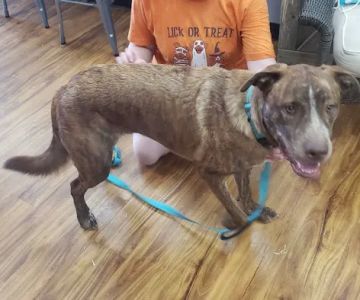Signs of Pet Dehydration and How to Address It
Dehydration is a serious concern for pets, just as it is for humans. It can lead to various health issues and, in extreme cases, can be life-threatening. As a pet owner, it’s important to recognize the signs of dehydration early and take action to prevent further complications. In this article, we will discuss the common signs of pet dehydration, why it’s important to address it, and how you can help keep your pet hydrated and healthy.
- Understanding Pet Dehydration
- Common Signs of Pet Dehydration
- How to Prevent and Address Dehydration
- When to See a Veterinarian
1. Understanding Pet Dehydration
Dehydration occurs when a pet loses more fluids than it takes in. Fluids are vital for maintaining normal body functions, such as regulating temperature, supporting cellular processes, and flushing out toxins. Pets can become dehydrated for several reasons, including illness, hot weather, exercise, or not drinking enough water. It's crucial to stay alert and monitor your pet’s water intake, especially during the warmer months or after physical activity.
Why Dehydration is Dangerous
Even mild dehydration can lead to more severe health issues. It can affect your pet’s ability to maintain normal body temperature, reduce blood circulation, and impair kidney function. If left untreated, dehydration can result in organ failure, shock, and, in extreme cases, death. Recognizing the early signs of dehydration and addressing it promptly is key to ensuring your pet’s well-being.
2. Common Signs of Pet Dehydration
There are several signs to watch for when assessing your pet's hydration levels. Some are more obvious, while others may require closer attention. The following are the most common indicators that your pet may be dehydrated:
1. Dry Nose and Gums
A dry or sticky nose and gums can be an early sign of dehydration. When pets are well-hydrated, their noses and gums should feel moist and cool. If they are dry or sticky to the touch, dehydration might be setting in.
2. Loss of Skin Elasticity
One of the easiest tests for dehydration is the skin tent test. Gently pinch the skin on the back of your pet’s neck or between the shoulder blades. If the skin doesn’t quickly return to its normal position, it may indicate dehydration. Healthy, hydrated skin will snap back into place immediately, while dehydrated skin will remain “tented” for a few seconds.
3. Decreased Energy and Lethargy
Pets that are dehydrated often become lethargic and lose their usual energy. If your pet seems more tired than usual or is less active, dehydration could be a factor. If the lethargy persists for more than a few hours, you should seek veterinary advice.
4. Dry Mouth and Tongue
A dry mouth and tongue are common signs of dehydration. When pets are properly hydrated, their mouths and tongues are moist. If you notice your pet’s tongue is dry and sticky, it's important to address their fluid intake.
5. Sunken Eyes
In more severe cases of dehydration, your pet’s eyes may appear sunken and dull. This is a serious sign that they may be severely dehydrated and require immediate attention.
3. How to Prevent and Address Dehydration
As a pet owner, there are several proactive steps you can take to help prevent dehydration and address it if it occurs:
1. Provide Fresh Water at All Times
Ensure that your pet has access to fresh, clean water throughout the day. This is the simplest and most effective way to prevent dehydration. Consider placing multiple water bowls around your home and refilling them regularly. In warm weather or after exercise, ensure your pet drinks more water to replenish lost fluids.
2. Offer Hydration Supplements
If your pet is reluctant to drink water, consider offering hydration supplements or water-rich foods. For example, wet food, ice cubes, or ice chips can be a fun and hydrating treat. You can also purchase specialized hydration drinks made for pets, which are often flavored to entice them to drink more.
3. Limit Physical Activity in Hot Weather
Hot weather can quickly lead to dehydration in pets. If it’s particularly hot outside, limit your pet’s exercise and avoid walks during the hottest parts of the day. Always carry water for your pet during outdoor activities, and give them plenty of opportunities to drink.
4. Use a Pet Water Fountain
Some pets may be more inclined to drink water if it’s flowing. A pet water fountain can encourage your pet to drink more, as many animals are attracted to moving water. This can be especially helpful if you have a pet that tends to drink less water than needed.
5. Monitor for Signs of Illness
Sometimes dehydration is caused by an underlying illness, such as kidney disease, diabetes, or gastrointestinal issues. If you notice your pet is drinking excessively or not drinking enough, it may be time for a check-up with your veterinarian to rule out any medical conditions.
4. When to See a Veterinarian
If you suspect your pet is dehydrated, and they are showing signs such as lethargy, dry mouth, or sunken eyes, it's essential to seek veterinary care as soon as possible. Severe dehydration can lead to serious complications, and prompt treatment is crucial. Your veterinarian will perform tests to assess the level of dehydration and may administer fluids intravenously or subcutaneously to help restore hydration levels.
If you're concerned about your pet's hydration or health, don't hesitate to contact a trusted veterinarian. At Hidden Brook Veterinary, our experienced team is dedicated to providing the best care for your pets. From preventive care to emergency services, we're here to ensure your pet stays happy and healthy. Reach out to us today to schedule a consultation and ensure your pet’s well-being.











